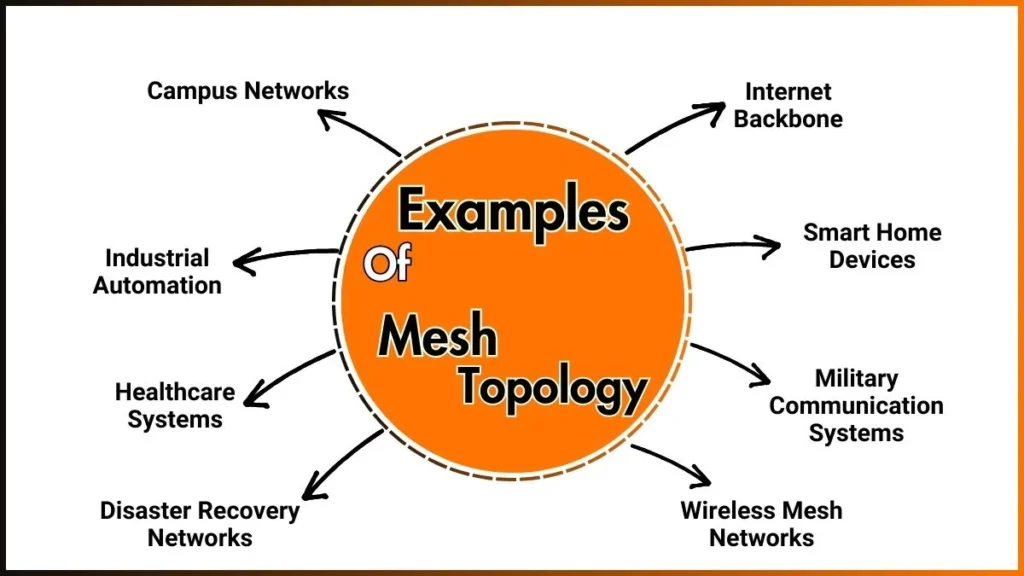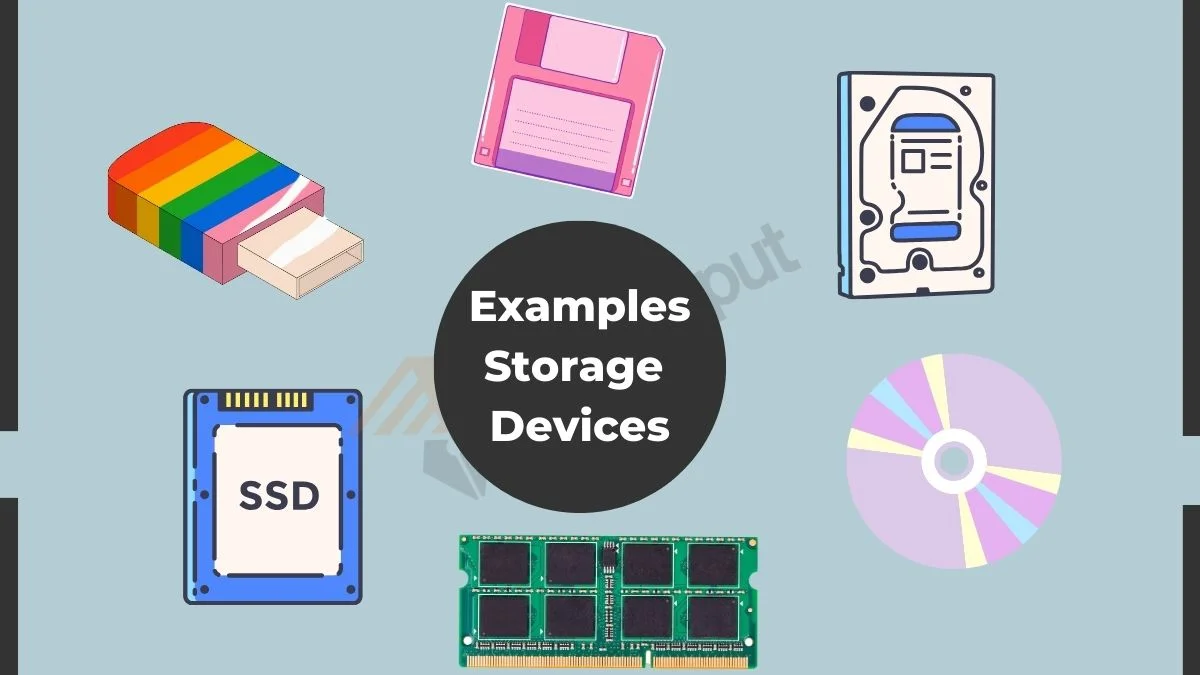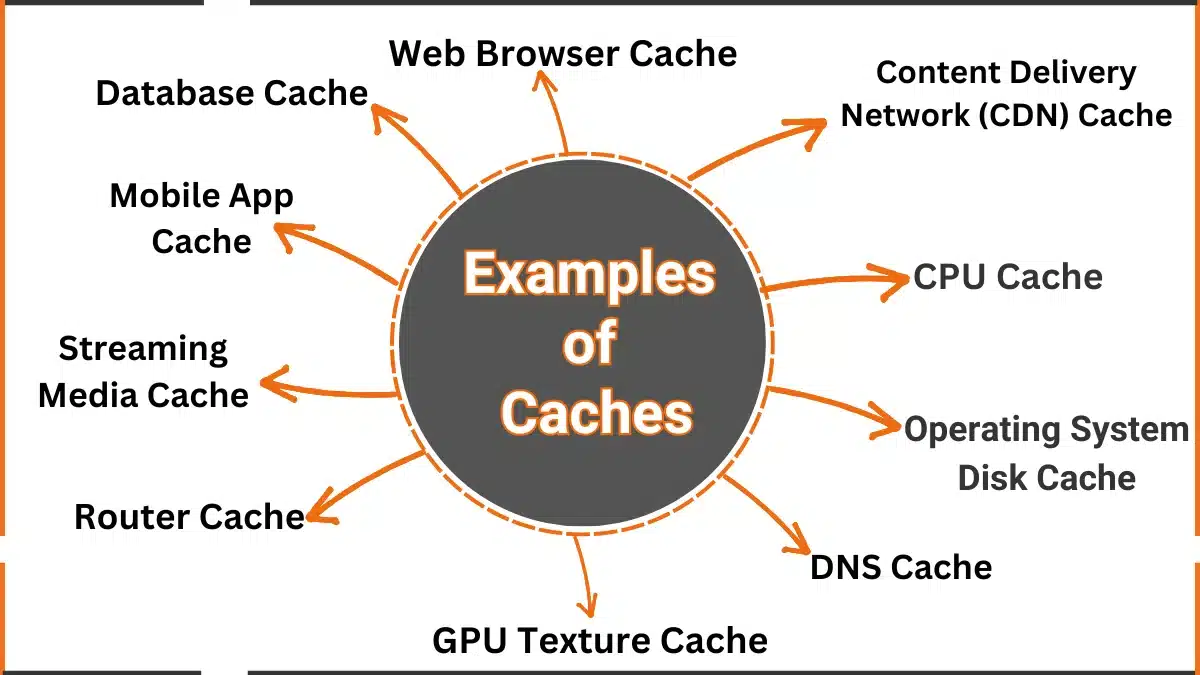10 Examples of Mesh Topology in Networking
Examples of mesh topology include Smart Home Devices, Military Communication Systems, Campus Networks, Industrial Automation, and many more that we will look at below.
Examples of Mesh Topology
Here are some examples of mesh topology in networking:

1. Internet Backbone
The internet is one of the most common examples of a mesh network. It connects millions of servers and routers worldwide. In a mesh topology, data can reroute through other paths if one connection fails.
Imagine a cable breaking under the ocean. Instead of losing connection, the internet automatically reroutes data through other cables. This ensures that websites, emails, and videos continue working without interruption.
2. Smart Home Devices
Smart home devices like lights, thermostats, and security cameras often use mesh networks. These devices need to communicate with each other and with your smartphone or Wi-Fi router.
If your Wi-Fi router is in the living room, a smart bulb in the bedroom might be too far to connect directly. In a mesh network, the bulb can connect through other devices, like a smart speaker in the hallway.
3. Military Communication Systems
Military networks use mesh topology for secure and reliable communication. Soldiers need to stay connected, even in remote or dangerous areas. For example, if one communication tower is destroyed, messages can still be sent through other towers.
This ensures that soldiers can always communicate with their team and headquarters.
4. Wireless Mesh Networks (WMNs)
Wi-Fi extenders use mesh topology to improve Internet coverage in large areas. For example, Google Nest Wi-Fi creates a mesh network to cover every corner of your home.
If you have a big house, the Wi-Fi signal from the router might not reach the upstairs bedroom. In a mesh network, the signal travels from the router to a nearby device, like a Wi-Fi extender, and then to the bedroom.
5. IoT (Internet of Things) Networks
IoT devices such as sensors in agriculture or smart cities use mesh networks to share data efficiently. For example, in a smart farm, soil sensors monitor moisture levels.
If one sensor is too far from the central system, it can send data through other sensors. This ensures that all data reaches the central system without loss.
6. Disaster Recovery Networks
During natural disasters, emergency teams use mesh networks to communicate. These networks are reliable and can work even if some connections are damaged.
Traditional communication systems might fail after an earthquake. Mesh networks allow rescue teams to set up temporary communication systems. If one connection is broken, data can still travel through other paths.
7. Campus Networks
Universities and large campuses use mesh topology to provide Internet access across multiple buildings. If you move from the library to the cafeteria, your device will automatically connect to the nearest node. This ensures you stay connected without having to manually switch networks.
Mesh networks make it easy to provide seamless Internet access in large areas. This is essential for students and staff who need constant connectivity.
8. Industrial Automation
Factories use mesh networks for machine-to-machine communication. Robots and assembly lines rely on these networks to work efficiently.
If one robot fails, others can still communicate and complete the task. For example, in a car factory, if a welding robot stops working. The painting robot can still receive instructions through the mesh network.
9. Healthcare Systems
Hospitals use mesh networks for patient monitoring systems. These networks ensure that critical data is always transmitted reliably. If a patient’s heart rate monitor sends data to a nurse’s station, the data can travel through multiple paths. If one path is busy, the data automatically takes another route.
10. Gaming Networks
Online gaming servers use mesh topology to reduce lag. This ensures smooth gameplay for multiplayer games. If you are playing a multiplayer game with friends, the data travels through the fastest path to reduce delays. If one server is overloaded, the data reroutes through another server.







Leave a Reply